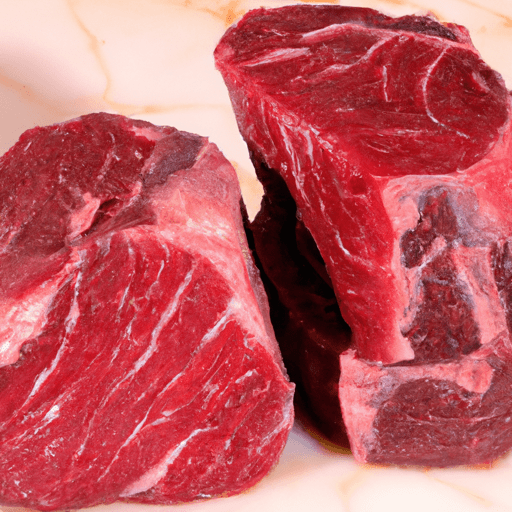The Versatile Beef Cubes: From Stews to Kebabs
Beef cubes, those bite-sized morsels of tender goodness, are a staple in many cuisines around the world. Whether you’re simmering them in a hearty stew, threading them onto skewers for a barbecue, or adding them to a rich and flavorful curry, beef cubes are a versatile ingredient that can elevate any dish. In this article, we’ll explore the taste, common uses, nutritional value, and interesting facts about beef cubes that will leave you craving for more.
The Taste of Beef Cubes
Beef cubes are prized for their intense flavor and succulent texture. When cooked properly, they can be incredibly tender and melt-in-your-mouth. The deep, rich taste of beef cubes adds a savory quality to any dish, making them a popular choice for hearty and comforting meals. Braised beef cubes develop a robust flavor with a hint of sweetness, while grilled beef cubes offer a charred and smoky note. The taste of beef cubes can vary depending on the cut of meat used, adding to their culinary versatility.
Common Uses in Cooking
Beef cubes are a go-to ingredient in a variety of dishes, from traditional recipes to modern culinary creations. Here are some popular ways to use beef cubes:
Stews and Casseroles: Beef cubes are perfect for slow-cooked stews and casseroles. Whether you’re making a classic beef stew or experimenting with international flavors like boeuf bourguignon or goulash, the natural gelatin in the beef cubes helps create a luscious and velvety sauce.
Kebabs: Marinated and skewered beef cubes are a highlight at any barbecue or cookout. Tender and juicy, they are typically paired with colorful vegetables and grilled to perfection. The combination of seared meat and charred veggies offers a burst of flavors and textures.
Curries: Beef cubes lend themselves well to aromatic and spicy curries. Simmered in a fragrant blend of spices, coconut milk, or tomato sauce, they absorb the flavors and become exceptionally tender. From Indian beef curry to Thai Massaman curry, the options are endless.
Stir-Fries: Quick and delicious, beef cubes work wonderfully in stir-fried dishes. With their rapid cooking time, they retain their tenderness while absorbing the vibrant flavors of soy sauce, garlic, and ginger. Served with a bed of steaming rice or noodles, beef stir-fries are always a crowd-pleaser.
Soup and Broth: The robustness of beef cubes adds depth and heartiness to soups and broths. Whether you’re making a classic French onion soup or a comforting beef noodle broth, beef cubes infuse the liquid with their rich flavor and create a comforting meal.
Nutritional Value
Beef cubes are not only a treat for the taste buds but also a source of valuable nutrients. They are a great source of high-quality protein, which contributes to muscle growth and repair. Beef cubes also contain essential vitamins and minerals like iron, zinc, and vitamin B12. While they can be relatively high in fat, opting for lean beef cuts can provide a healthier option without compromising on taste. As with any ingredient, moderation is key, and it’s important to consider personal dietary needs and preferences.
Interesting History and Facts
Did you know that beef cubes were popularized in the mid-20th century through the rise of convenience food? With the advent of frozen meals and packaged ingredients, beef cubes became a convenient option for busy households looking for flavorful and time-saving solutions. Additionally, different cultures have their unique variation of the beloved beef cube-based dish. For example, the French take pride in their boeuf bourguignon, while the Korean cuisine boasts deliciously marinated beef bulgogi.
In Conclusion
Beef cubes are a culinary gem known for their versatility, taste, and convenience. Whether you’re simmering them in a stew, grilling them on skewers, or adding them to a spicy curry, beef cubes elevate dishes and satisfy palates around the world. So the next time you’re at the butcher or planning your menu, remember to grab a pack of beef cubes and unlock a world of delicious possibilities.
Beef Cubes
Origin and Common Uses: Beef cubes are small bite-sized pieces of beef usually cut from lean cuts such as chuck or sirloin. They are commonly used in a variety of dishes including stews, stir-fries, kebabs, and kabobs. These versatile cubes are often marinated or seasoned before cooking to enhance flavor and tenderness.
Nutritional Benefits: Beef cubes are a good source of protein, vitamins, and minerals. They provide essential nutrients such as iron, zinc, and B-vitamins including vitamin B12. Beef cubes can be part of a balanced diet, supporting muscle growth and repair, aiding in nutrient absorption, and promoting overall health.
Unique Properties: One unique property of beef cubes is their ability to retain flavors when cooked slowly in stews or braises. The presence of connective tissue, collagen, and fat within the meat contributes to the rich and tender texture of the cubes. Simmering these cubes allows for these components to break down, resulting in a flavorful and succulent dish.
Historical Significance: The use of beef cubes or diced beef in cooking has been a part of culinary traditions for centuries. Slow-cooked beef dishes such as stews and braises have been prepared in various cultures around the world. These methods were developed to utilize tougher cuts of meat, making them more palatable and tender through long, slow cooking processes.
That covers the facts about beef cubes regarding their origin, common uses, nutritional benefits, unique properties, and historical significance.




Use the share button below if you liked it.
It makes me smile, when I see it.